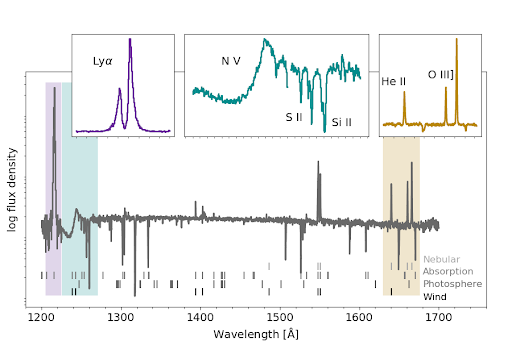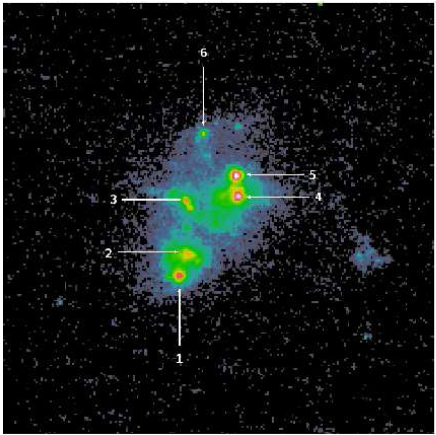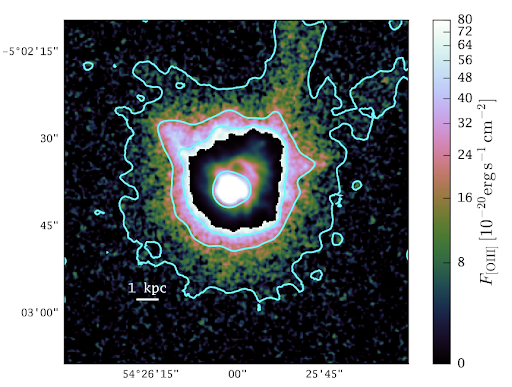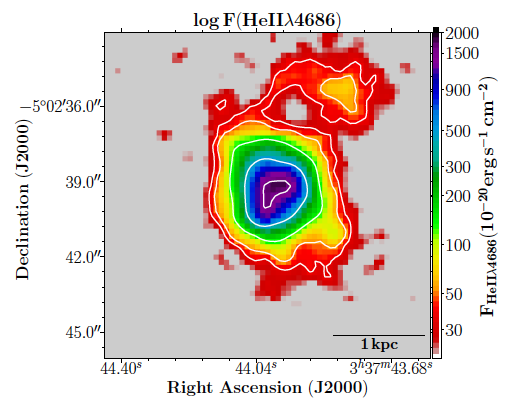The overarching goals are to perform precise measurements of the ionization state of the IGM during the first Gyr of the Universe, to construct the timeline and topology of reionization, and to observe the formation and growth of the primeval galaxies that hosted the first (population III) metal-free stars and black holes. Some of the fundamental questions/topics that MOSAIC will address are:
- The evolution and topology of the IGM. Crucial measurements are derived by characterizing the Lyα emission (the distribution of equivalent widths and fraction of galaxies with Lyα emission) and clustering of Lyα emitters. Overdensities of Lyα emitters will trace large-scale ionized bubbles in the IGM, and the Lyα spectral profile will be used to determine the characteristic sizes and densities of the first cosmological HII regions.
- The escape of ionizing radiation. One of the key quantities to establish how galaxies reionized the Universe is the escape fraction of Lyman continuum (LyC) photons. This relies on measurements of low ionization absorption lines (e.g. Si II 1260), and the Lyα line profile that can be easily resolved thanks to the high spectral resolution of MOSAIC.
- Outflows, kinematics and abundances. UV absorption lines provide fundamental information on the cool interstellar medium (ISM) of the first galaxies. This includes early chemical enrichment, the gas column density and covering information vital for LyC emission, kinematics, mass flow rates, and energetics. All are mandatory to determine the wind properties, feedback processes, and metal transport acting in the first galaxies.
- Nebular gas excitation. The origin of high-excitation UV emission lines (e.g., C IV 1548, HeII1640) remains intensely debated and challenging to explain. Spatially resolved studies of these lines will be essential to constrain properties of the ionizing sources, the contribution of accreting supermassive black holes, and their influence over the first nebulae. Understanding the physics behind the nebular HeII line typical in the early Universe is particularly relevant since this line is suggested as a potential diagnostic of the predicted population-III stars. Discovery of metal-free nebulae would bring foundational information on primeval galaxy formation, and no such galaxies have been observed so far. MOSAIC can bring a revolution to the study of the primeval Universe by confirming observations of the first stars and zero metallicity galaxies for the first time.
- The first assembly of large scale structure. This can be investigated by looking for EoR proto-clusters. Within the first few months of observations, the James Webb Space Telescope has already identified several proto-clusters candidates up to very high-redshift (z>10). These structures are key to understanding the formation and evolution of the first generation of galaxies. Recent simulations suggest that galaxies formed in these first structures may be metal rich. MOSAIC will have the potential to probe this aspect of early galaxy formation. Also, high signal-to-noise spectroscopy of distant Lyman-break galaxies (LBGs) will be unique to study the relative motion of gas with respect to galaxies (crucial to discriminate inflows and outflows), an experiment that is extremely difficult with current facilities.
- Properties and evolution of the first stars. Very deep spectral observations will detect the continuum of galaxies at z>6; broad features forming in the winds of massive stars (N V 1240; Si IV1440; C IV1550) allow for precise age-dating of the stellar population and the recent star-formation history. This will provide valuable estimates of the mechanical energy return to the ISM and feedback from the massive stars and their explosive endpoints
Contributions of MOSAIC
Rest UV spectra contain a wealth of information about the properties of EoR galaxies: the origin/nature of the ionizing sources; physical and chemical properties of gas-phases; and star-formation. MOSAIC will enable paramount UV spectroscopic surveys of thousands of galaxies at z>6, and the discovery of new ones. This is required to obtain the first detailed picture of the EoR; key UV diagnostics are illustrated below, e.g.:
- the emission line Lyα : line profile and spatial variation for studying the ISM properties; the equivalent width and prevalence amon Lyman Break Galaxies for studying the intergalactic HI distribution and how IGM reionization proceeds;
- the metal absorption lines at λ>1216 Å: e.g. Si II, C II for stutying the covering fractions & outflow rates, or Si II* λ1265 for studying the geometry from fluorescent lines ;
- high ionization emission lines He II, O III], CIII], CIV for studying the ionized ISM : gas density, metallicity, IMF, ionizing spectrum

- stellar absorption features such as PCyg/Wind (CIV, N V …) and photospheric (C III, FeIII..) for studying stellar winds, metallicity, α-enhancement…;
- strong nebular HeII1640-emitting spectra for studying first galaxies with metal-free ionizing stars;
- emission line ratios (CIV/CIII], (CIV+CIII)/HeII …) and EW(CIV), EW(CIII]) to separate between star formation and AGN;
| |||||



